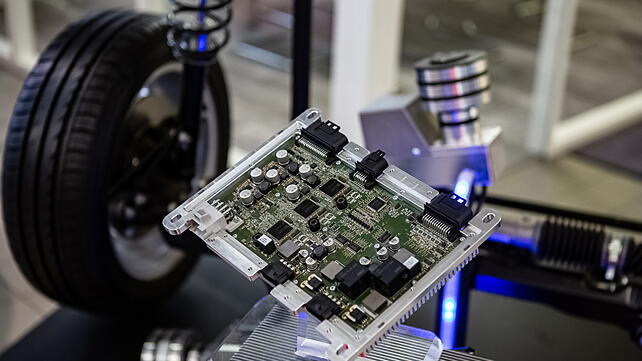
Leading automotive supplier, Schaeffler Group’s steer-by-wire technology Space Drive is making its way into the racing circuit. The technology, which has no mechanical steering column, and steering commands are transmitted purely digitally via cable, is being used in three DTM cars from different German car makers.
The Deutsche Tourenwagen Masters (DTM) 2021 season opener in Monza, Italy will see an Audi R8 LMS GT3 driven by Sophia Flörsch, Schaeffler’s brand ambassador; in a Mercedes-AMG to be driven by Gary Paffett and in Timo Glock’s BMW M6 GT3.
Matthias Zink, CEO Automotive Technologies, Schaeffler said, “Using the technology under extreme conditions proves its maturity and brings the development a step closer to large-scale production. Space Drive is a thoroughly tried and tested key technology for autonomous driving with more than a billion km driven on public roads.”
Commenting on the Space Drive system’s entry into motorsports, Roland Arnold, CEO, Schaeffler Paravan Technologie GmbH said the motorsport area has always been seen as a development accelerator.
“In this environment, the Space Drive system is subjected to extreme stresses, making it an ideal test environment for generating important functionalities for the on-going development of Space Drive 3 for large-scale production,” he said.

Steering in the autonomous era
Space Drive is a key technology for autonomous driving, and autonomous driving is an important component of Schaeffler’s Roadmap 2025.
As per the company’s “Vision Chassis 2035”, Schaeffler predicts that by 2035, around 30% of all new cars and light commercial vehicles produced worldwide will be at least partially automated, while half of them will offer the capability for highly automated driving.
The increasing automation of driving functions on the road to autonomous vehicles also imposes more rigorous requirements on chassis applications in respect of reliability and safety, said Viktor Molnar, President Chassis Systems business division, Schaeffler. “We are continuing to ramp up our activities at component and system level and are well on track to becoming a preferred technology partner for intelligent drive and chassis solutions,” he said.